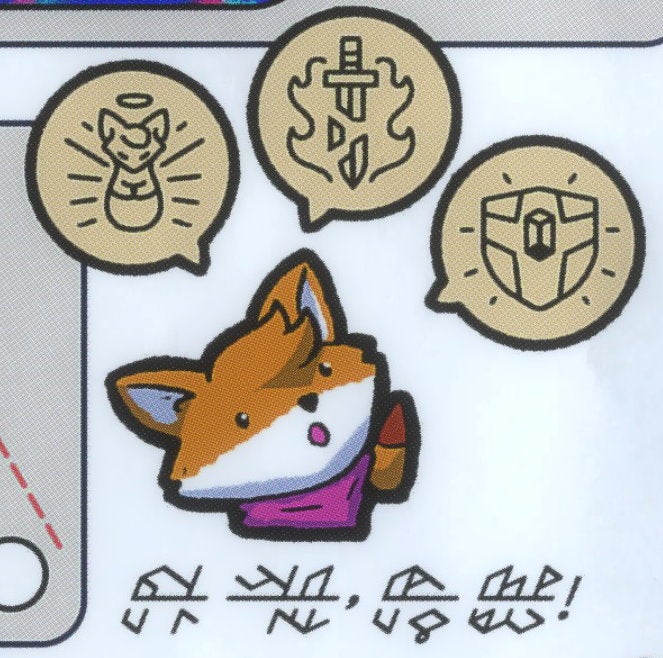It’s the little Zelda-like fox who could, Tunic! Katharine: After playing and not liking Tunic’s demo very much, I went into this very clear Zelda homage with a bit of trepidation. I was sad I didn’t get on with that earlier demo, what with Zelda being my favourite thing on the entire planet (sorry, PC), and I was worried that its Soulsian-like combat would prove too gruelling and off-putting. Said combat is still utterly rock hard at times (lookin’ at you, Siege Engine), but the more I played of Tunic proper, the more I realised that its demo was only a tiny snapshot of a much larger, more engrossing whole. Indeed, it was missing the key ingredient that would eventually go on to make Tunic one of my favourite games of 2022. And that, dear readers, is its wonderfully crafted instruction booklet. Riffing on old NES manuals of yore (and specifically the one for the secretly second-best Zelda game of all time, Zelda II: The Adventure Of Link, fight me), Tunic’s cryptic booklet is pieced together page by page as you explore its mysterious, ruined island. Each page provides vital clues on how you can interact with this imposing, seemingly impenetrable place, but the runic language it’s written in constantly holds you at arm’s length - arguably, a bit like the rock hard difficulty of actual NES games did back in the 90s. There’s no denying that Tunic still asks a lot of its players, both in terms of its action and brain-melting puzzles, but the way everything links back to that all-important booklet and the knowledge contained within is what elevates Tunic far beyond the realms of mere homage. This is a game that captures, riffs and plays on the very concept of nostalgia and that childlike sense of discovery we constantly yearn for in games these days, making it both a fundamental part of the way you navigate its world, and how you approach its mythic conclusion at the end. It’s expertly done, and peeling back the layers of its giant, world-spanning puzzle box is an absolute delight. It’s that gradual unfurling of secrets that ended up dominating every waking thought earlier in the year, and cor, when a game infiltrates my brain like that, I just know we’re onto a winner. I love a good mystery (which is good, because Tunic has tons of ’em), and when so many of them are teased out through mastering its tough, but fair combat system, ooofta, that’s the real sweetspot, that is. Importantly, though, it’s not as ridiculously hard as Elden Ring and its oeuvre of Soulslikes. I mean, how can it, when you’re accompanied by such a chill, dreamy soundtrack? Simply impossible. Altogether, I’m so glad I pushed through my earlier demo worries, because lemme tell ya, I’d have missed out on one of my favourite games from the last half decade if I had, and that would have been an absolute tragedy. Hayden: Echoing Katharine’s thoughts, Tunic’s instruction manual sure is a tantalising way to tease solutions out of your brain. Or, more accurately, it was when I actually found the bloody pages. I somehow missed a bunch while exploring, so I spent a lot of time sort of stumbling into answers. Sheer force of will pushed me to make progress, and that served me well enough for about half of Tunic’s series of sly puzzles. Eventually, though, I reached a conundrum that I simply couldn’t crack. I’ll be vague for those who have yet to play, but after I collected the three keys and nothing happened, it was time to call in the cavalry. I was still fairly new to RPS back in March, and vid bud Liam was very new. I’m not great with new people, but I knew he was also playing Tunic for a video. Armed with that knowledge, I started firing questions into his virtual inbox. Those questions turned into shared bemusement at puzzles, and that shared bemusement became thrilled cheers (messages with lots of exclamation marks) when one of us finally found the path forward. Solving those puzzles might sound arduous, and honestly, they often were. Making your way through Tunic without the manual pages is an incredibly obtuse experience, like trying to find a way out of a conversation with your great great aunt after they’ve asked whether you’re dating during the family Christmas meal. While it likely wasn’t the intended experience, I’m grateful that Tunic let me go wrong, as that’s what made it feel so nostalgic. Muddling through Tunic alongside Liam was just like sitting with my brother to chip through The Minish Cap or Phantom Hourglass as a kid. We had no idea what we were doing, but figuring it out together was an absolute treat. Tunic trusting me to make mistakes and still find the solution (with lots of help from my pal) made it feel quite special, and proves that something quite lovely can blossom out of two people repeatedly saying “wot the fuk” over messages. Liam: I maintain that this is the best 2D Zelda game Nintendo never made.

